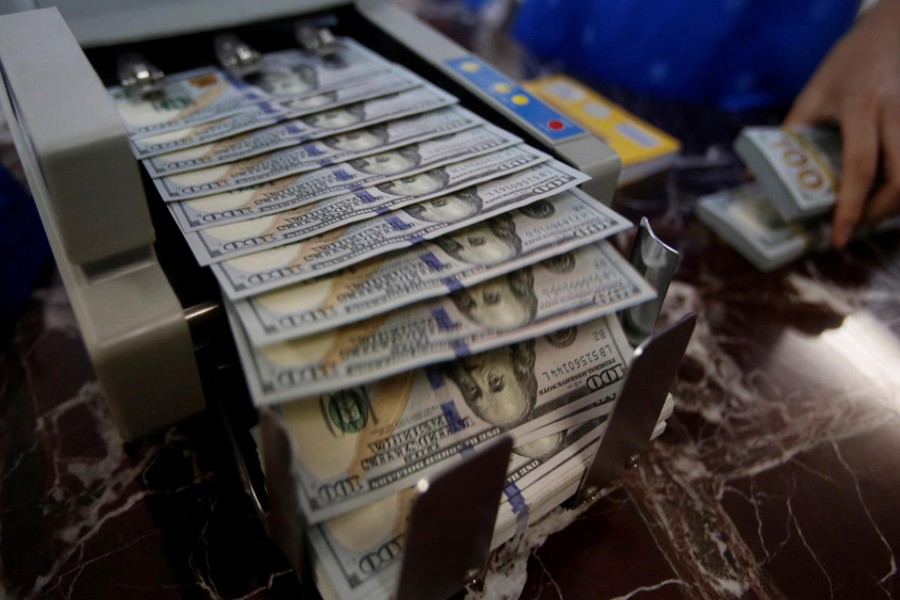The dollar rose to a one-week high on Thursday and stocks edged lower after signs that the Federal Reserve will keep raising interest rates through 2019 undermined a bounce in world markets.
China’s stock markets were hit hard - its benchmark stock index fell to four-year lows - in a gloomy session for Asian equities and for the yuan which approached a two-month low.
China’s premier warned of risks to the economy from an escalating tariff war with the United States.
European shares, however, largely shrugged off the disappointment in Asia. London’s FTSE traded 0.1 per cent higher and Frankfurt’s DAX and Paris’s CAC both rose 0.3 percent. A pan-European equity index rose 0.4 per cent.
Minutes of the Federal Reserve’s Sept. 25-26 meeting showed every Fed policymaker backed raising interest rates last month and also generally agreed borrowing costs were set to rise further.
That reinforces expectations that US yields will rise further despite US President Donald Trump’s view that the Fed was tightening too much.
“Corporates have done incredibly well but it’s clear we are going into monetary tightening in the U.S and that makes people worried about global debt having gone up so much in recent years,” said Peter Lowman, CIO at Investment Quorum, a UK wealth manager.
At a time of simmering trade war tensions “people are perhaps taking chips off table and maybe going into cash and short-dated bonds,” he said.
Overall, third-quarter earnings for S&P 500 companies are seen growing 21.8 per cent, according to I/B/E/S Refinitiv.
The greenback bounced on Thursday. Against a basket of its rivals, the dollar gained for a third consecutive day, up 0.2 per cent at 95.78. That checked emerging-market gains.
“The last thing emerging markets, or the US yield curve or equities want is a reminder that US rates are going to keep going up,” Rabobank analysts told clients.
The euro changed hands at $1.1518, holding steady versus the greenback, after losing 0.65 per cent on Wednesday. The euro has lost just under 3.0 per cent of its value versus the dollar over the last three weeks.
Major currencies have shown limited reaction after the US government late on Wednesday refrained from naming China as a currency manipulator.
In its semi-annual currency report, the US Treasury Department said a recent depreciation of China’s yuan currency will likely exacerbate the US trade deficit, but US officials found Beijing appeared to be doing little to directly intervene in the currency’s value.
“The US refrained from labeling China a currency manipulator, but dialed up the rhetoric against its currency practices,” said Sue Trinh, Head of Asia FX Strategy, RBC Capital Markets.
The yuan fell 0.2 per cent to 6.9424 per dollar in the offshore trade, not far off 1-1/2-year low of 6.9587 touched in August.
Sterling supported
In Europe, an EU leaders’ summit with British Prime Minister Theresa May yielded little obvious progress on a Brexit deal being negotiated between Britain and the bloc.
According to Reuters news agency, sterling did, however, turn positive on Thursday after May confirmed she was open to discussing an extension of the transition period after Brexit.
Oil steadied on Thursday as support from ongoing tensions over the disappearance of a prominent Saudi journalist offset a big drop overnight due to a jump in US crude stockpiles.
US West Texas Intermediate crude for October delivery was up 1.0 cent at $69.56 a barrel by 0840 GMT, after falling 3.0 per cent in the previous session to settle below $70 for the first time in a month.


